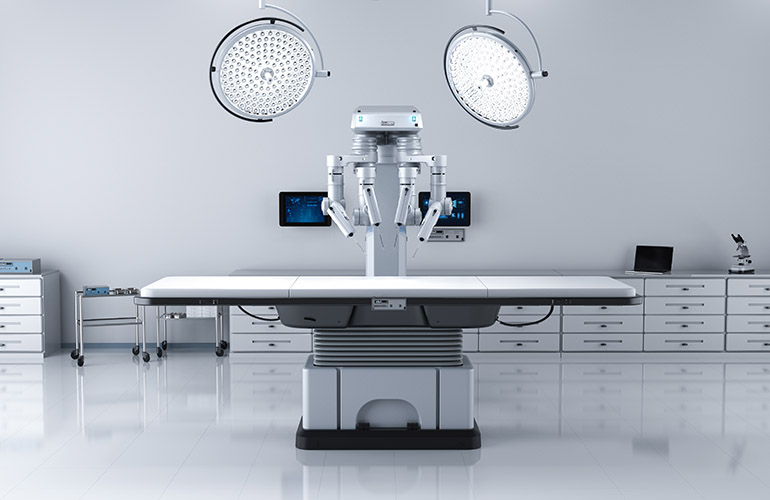Image from Adobe Stock.
In July, the AI for Good Global Summit in Geneva highlighted current uses of artificial intelligence (AI) across sectors including agriculture, education, and health. In medicine, several sessions and demos focused on applications that are already being piloted or deployed in defined settings.
While much of the technology on display remains in development, healthcare featured active trials and early deployments. Sessions led by the World Health Organization (WHO) and the Global Initiative on AI for Health discussed uses in diagnosing noncommunicable diseases, expanding care access, and supporting emergency response in low-resource settings. Among the demos, health tools—from AI-assisted imaging to workflow software—showed how clinical evaluations are progressing. Below are a few areas drawing particular interest.
Robotics and clinical readiness
Medical robotics drew attention for moving from concept toward clinical use. Systems aimed at real-time navigation, complication prediction, and multi-data integration were presented as decision support for clinicians rather than replacements. Most devices remain in research and development, but a subset—such as established robotic navigation platforms including Stereotaxis—illustrated how advanced guidance systems operate within regulated care environments today.
Large computing providers, including Nvidia, also underscored the infrastructure needed for healthcare AI, from on-premise acceleration to deployment pipelines.
Trust remains a prerequisite
Attendee views on automation varied, reflecting broader concerns about role substitution. Speakers emphasized augmentation—tools that provide better data and visibility for clinicians. Building trust will depend on clear performance evidence, appropriate oversight, and transparent data use.
Data as a driver of decision support
Another theme was the central role of data. Longitudinal datasets and procedural histories can inform decision support, identify practice patterns, and surface risks earlier when applied with validated methods. These topics are expected to continue at the upcoming HRX symposium, with attention to safety, workflow impact, and evaluation frameworks.
Shared responsibility
Speakers repeatedly called for ethical, responsible development with international cooperation and attention to equity. Participation from public, nonprofit, and government stakeholders pointed to the need for common standards and careful governance.
Nathan Kastelein, director of clinical engineering and advanced concepts at Stereotaxis.
Disclosure: The author is employed by Stereotaxis. The views expressed in this article are the author’s and do not necessarily reflect those of R&D World or its employees
Read the full article from the Source




